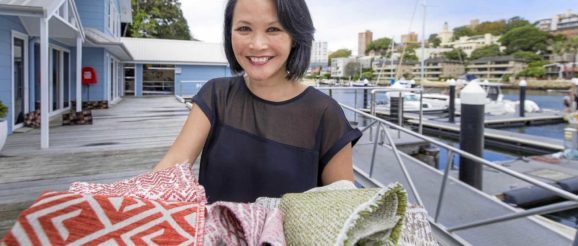Making aged care “sexy” requires innovation | Seniors News

AGED care institutions can look sexy, says Julie Ockerby, a former nurse who is winning global awards for her pioneering work in Australian healthcare.
She believes institutions for the elderly should have much more in common with hotels, including a sexy, inviting appearance.
The principal creative director for Meli Studio, Ms Ockerby has been recognised on the world stage for her design innovations. She won a Gold Stevie Entrepreneur of the Year – Business & Professional Services and a Silver Stevie for Woman of the Year in the 2019 International Business Awards.
Ms Ockerby says more innovation in aged care is needed.
“I don’t think the needs and demands of our seniors population is now so much more demanding, I just don’t think it has been met in the past,” she said.
“Rather than aged care being scary, it should be a destination point, a continuation of life’s milestones that is not daunting but an added life experience in one’s timeline.”
A member of Ageing Asia’s Fast Track team which conducts classes in best practice aged care around the region, Ms Ockerby’s inspiration came from a deeply personal experience.
“My father was ill and needed a nursing home, but I couldn’t find one to the standards I felt he deserved. Nobody was considering the environment as adding to his quality of life,” she said.
“Why can’t aged care bedrooms be designed more like hotel suites? Why can’t dining areas be more interactive and truly inspire all five senses, as we see in modern restaurants?
“Moving forward, I’d like to see the design trends embracing the whole family to encourage intergenerational involvement.
“Areas such as private dining rooms need to be more than a big table with 12 chairs. They have to involve outdoor spaces and landscape features, such as playgrounds.
“Our recent aged care home projects feature cafes, hotel-style reception or lobby spaces, hair salons and cinemas.”
Ms Ockerby was so frustrated by the lack of quality fabrics tailored to the aged, and the predominance of uninspiring beige (her personal design bugbear) that she released her own Meli Studio fabric range. The bright but not overbearing colours, simple patterns, and soft but hardwearing textures all have an obligatory waterproof backing.
Meli Studio also designs specialist dementia units using colour psychology to reduce the institutional feel.
According to Ms Ockerby, dementia design needs to involve the person in designing their space according to colours
they like, their hobbies and their general daily routine.
“In an aged-care setting, you are designing for a cluster of residents all with individual needs. Achieving core requirements of dementia design such as contrast levels and spaces that evoke a sense of calmness is crucial to maintaining behavioural status quo.”
Given a choice, Japan would be her preferred destination for aged-care living.
“Japan does aged care really well, with dignity, privacy and intergenerational activities,” she said.
“Plus, top priorities such as food, music, physical exercise, social interaction and music are part of everyday life in a home in Japan.”
